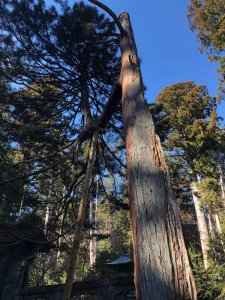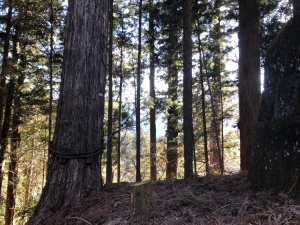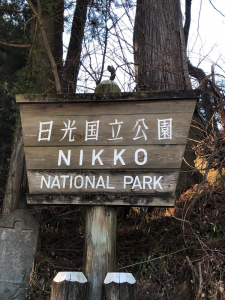We spent the day in Nikko at the national park and UNESCO world heritage site. We visited the Toshogu temple which has famous artwork such as the monkeys that teach children how to live (see no evil, hear no evil, speak no evil).

The monkeys carved into the stable. Source: Rachel Marshall
It’s a site where Shintoism and Buddhism exist side by side because the breathtaking surroundings make it a sacred spot. The Buddhist temple was recently restored, which we were told is not unusual for the buildings to be revamped rather than preserved like the Europeans. They see it almost as a purification of the building while the truly sacred part is the mountains and forests. However, the renovations are done using as many original materials as possible as well as the original plans to preserve the heritage, according to the UNESCO website. One byproduct of this is that the materials are locally sourced because the people who initially built the shrines used the resources around them. In addition to the components, all of the decorations and art use a lot of plants, animals, and elements. All of the zodiac statuettes were sitting in large open blossoms surrounded by fire and are associated with animals. However, amongst the heavy emphasis on preserving the nature and the origins, there was evidence of the toll of tourism. Many of the old growth trees were propped up or braced by cables to prevent them from falling down the mountain.

Old growth tree being propped up. Source: Rachel Marshall

Old growth tree stabilized with cables. Source: Rachel Marshall
The banks of the river under the iconic bridge had manufactured banks to prevent the river from naturally changing course and possibly damaging the bridge or road. Some things had been added for the comfort of visitors such as vending machines and gift shops, which have the potential to remove from the feeling of spirituality. These challenges are a small insight into the challenges being faced across Japan in trying to find a balance of nature and heritage with progress. ARI takes a different approach, rejecting the modern technology of fertilizers and central heating in order to reduce their environmental impact and preserve the spirit of local farming, and Tokyo’s approach seemed to be to fully embrace the modern economic era in most spaces while very carefully isolating some green spaces and museums that remove one from most of the lights and sounds of the metropolis. All of the methods are effective in their own ways and prevent different answers to a very difficult question, and Nikko has done well.

Source: Rachel Marshall
Recent Comments